In the Name of the Nation: India and its North East, authored by Sanjib Baruah interrogates the interaction of North East India with the territorial conceptions of the post colonial nation-state and state sovereignty. The North Eastern Region consisting of small language communities, tribes and sub-tribes offers the picture of opaque multiplicity. By contextualising the continuities and discontinuities between colonial and post-colonial state institutions, the author posits that the political process has reinforced a relation of hierarchy and a centre-periphery interactional dynamic. It has facilitated unique political circumstances with periods of suspension of democratic norms and co-existence of ethnic militias with political and legal institutions. Therefore, the book poses the question: whether democracy can be deepened under its unique context?
The book divided into five sections explores the historical and strategic circumstances for the ‘invention’ of the North East India. It proceeds into discussion of the impact of the 1947 partition on the political imagination in Assam. The author delves into the subject of settlement frontier and resource frontier and explores the complexities that hinder equitable distribution in the region. The book contextualises the Naga conflict and examines the subject of insurgency and the state response including the application of Armed Forces Special Powers Acts (AFSPA) in the region. The central themes in the book can be broadly divided into: Colonial Economy and administration; Migration and Citizenship; Settlement and Resource Frontiers; Insurgency and the Current Trends in Migration.
The author has relied on official writings and the personal essays during British colonial period; post colonial studies, development studies and security studies scholarship; speeches, writings and interviews of post-independence political leaders, administrative and security officials; government records; United Nations documents etc for writing the book.
Baruah suggests that unlike certain regions that have deep historical context for ethno-nationalism, north-eastern states are demarcated into ad-hoc spatial units that emerged for administrative convenience, economic planning and security calculations. Therefore, the political units are bereft of long historical regionalisation process.
During the colonial period, the territory was divided into Settled Regions, Excluded Areas, Partially Excluded Areas and the Tribal Areas of Assam. The settled areas of Assam emerged as the economic centre of the region and migrants were absorbed into the colonial economy. The introduction of tea plantations disrupted the traditional property regime and the old socio-economic networks. The opposition by local communities against their dispossession led to the introduction of Inner Line permit in 1873 to protect British economic interests. The direct rule including property rights and modern legal and administrative system were limited to the settled regions of Assam.
In excluded/ partially excluded tribal areas of Assam; colonial administrative machinery was largely absent and the system of indirect rule was applied. Consequently, tribal communities were granted customary laws for self-governance. It led to imposition of “group identities on individual subjects and institutionalizing group life”. The legacy of indirect rule and guarantee of protective status such as Inner Line permit, sixth schedule etc continued in the post-colonial period.
For the colonial administrators, the absence of caste in major parts of the region contradicted with their understanding of India as a hierarchical civilisation. The demographic imagination during the British rule was organised on civilisational scale and bio-cultural notion of ethnic traits was opted to identify local communities. It attached ethnicity with territory perpetuating the notion of ethno-territoriality creating rigid categorisation among hill tribes and plain tribes as well as ‘natives’ and ‘migrants’. The colonial standpoint of favouring indigenous groups over settlers/migrants persisted after 1947 shaping the contemporary trajectory of class formation.
The colonial period witnessed the demographic layering of educated Hindu Bengali elites working in the government as well as poor Muslim peasants from deltaic eastern Bengal for land and livelihoods in the sparsely populated region. This aspect of migration emerged as a politically explosive issue in Assam in the pre-independence period. From the Indian nationalist perspective, the Bengali elites were perceived as the local face of colonisation in Assam similar to Burmese experience with South Asian migrants and Cambodian and Laotian experience with Vietnamese officials working for French colonial administration. Moreover, the growing demography of Muslim migrants prompted the Muslim League’s plan of incorporating Assam in the future Islamic homeland which was resisted by the provincial nationalist leaders.
The migration from eastern Bengal and later East Pakistan continued that adopted Assamese as their first language. In this context, Baruah highlights that the perceived anxiety of the ethnic Assamese community in the Brahmaputra Valley did not lie primarily in the demographic change, but rather losing its ‘cultural patrimony over Assamese culture’ due to the growing number of Assamese speakers among the Bengali migrants. The demographic changes and the relative position of Assamese speakers in Assam in numerical terms continue to remain politically sensitive issue currently.
Baruah has delved into the subject of migration and the ethno-territorial political structure to examine the duality of settlement frontier and resource frontier in the region. The prevalence of customary law has raised the idea of rightful shares by rightful owners i.e. those that claim their status as native to the territory. Political claims-making over resources in the region is largely carried through these mechanisms. At the same time, settlement of new migrants due to economic, political or environmental reasons have faced counter-action from the already existing communities. The state’s preference for ‘indigenous groups’ over settlers/ migrants have added to the alienation of these displaced communities. Therefore, the politics in the region is trapped in the binary between settlement frontier and resource frontier “legitimising new patterns of exploitation, dispossession, subordination, and sub-citizenship”. The application of customary law and related land ownership in the coal mining areas of Meghalaya and Nagaland and timber producing areas of Arunachal Pradesh has led to environmental exploitation. In case of government intervention, customary law and indigenous rights have been cited to deflect pressure on the ongoing practices.
The political and legal structure of colonial Assam as a result of the British frontier system was similar to North West Frontier Province (NWFP) and the North East Frontier Tracts comprising of present day Arunachal Pradesh and parts of Nagaland has its parallel in the erstwhile Federally Administered Territorial Areas (FATA). The frontier policy transformed the region into “an administrative border, a frontier of active protection, and an outer or advanced strategic frontier.”
The region in the post-independence period has witnessed a transition from “imperial frontier space to the national space of a normal sovereign state.” The region has been largely seen through security lens reflected in the obsessive use of the term ‘chicken’s neck’ to describe the security vulnerability. The security orientation is reinforced by the spate of insurgencies that lingered in different parts of the region. The language of national security and geopolitics had normalised the post-partition political map of the region.
On the subject of violent conflicts in the region, Baruah notes that it does not fit into the category of insurgency which refers to armed rebellion with mass support. The armed groups in the region do not draw strength from the masses but thrive on the gaps in the rule of law and cooperation with politicians, bureaucrats, security officials and businesses. The armed groups are incapable of challenging the state. At the same time, clean victory against the insurgents is improbable. Therefore, the military approach is largely in favour of restoring normalcy and facilitating ceasefires and peace agreements.
It has led to hybrid political regimes in which state and non-state armed entities are in de facto informal partnership to exercise state power and the armed capabilities of insurgent groups are integrated into local political equations including collection of revenue (protection money), peoples’ courts etc. The former insurgents after surrender continue to carry guns transforming themselves into crime rackets and contribute to law and order disruptions. The current trend indicates a drop in incidents of insurgency but hike in cases of organised crimes such as extortions, kidnappings, drug trafficking etc. The author notes that the tendency to link the high voter turnout in elections in the region with the return of normalcy overlooks the complicity of insurgent groups in manoeuvring the electoral process by forming alliances with politicians to gain access to funds and local decision-making.
These factors have perpetuated the sustenance of the underground economy, continuation of AFSPA and hindered the resolution of multiple conflicts in the region contributing to democracy deficit. The author at the same time argues that the state-society tensions are highly reductionist that ignore the complexities in the region.
Besides the hard approach, the book delves into the soft approach including the application of popular counter-insurgency warfare doctrine of ‘Winning Hearts and Minds’. The symbolic significance of the historical figures from the region such as Lachit Borphukon and Srimanta Sankardev in Assam have been tapped by the central government since the 2000s through portraits, monuments, events etc. to rebuild confidence in the Assamese society.
The subject of de facto amnesty offered to surrendered insurgents has been questioned that violates the victims’ rights to justice. It reflects the dilemma between the rights based approach and security centric approach towards amnesty. Reconciliation mechanisms between the perpetrators and the victims’ families and involvement of civil society in the peace process have been suggested to overcome the said dilemma.
The political, economic and cultural integration of the region with the rest of the country is an ongoing process. For the educated youth from the region, the entry into central government services is an alluring prospect. Moreover, the economic opportunities in the Indian cities have attracted large number of people from the region employed in the service, hospitality and travel industries. The phenotypic distinction reflected in unique facial features has forged ‘Visual Orientalism’. The people from the region are increasingly accommodated in the ‘de-nationalised’ and ‘de-indianised’ elite consumer spaces. The lived experiences of the people of the region facing similar struggles of non-recognition, misrecognition and race based insecurity has led to a new form of socio-political awareness and the development of nascent pan-Northeast identity based on a racialized regime of visuality.
Baruah is an astute observer of political developments in the north-eastern region and his academic lifespan has covered wide array of scholarship in subjects such as frontier policy, insurgency and counter-insurgency, ethno nationalism, question of nationality, centre-state relations, migration etc. The book under discussion has touched upon these factors to examine the democratic deficit in the region. The central question on whether democracy can be deepened has been tackled comprehensively by delving into the colonial and post colonial history and its impact on the current socio-political environment of the region. Moreover, the security centric purview of the region under successive central governments has impacted the state-society relations. Therefore, the democratisation process in the region is dependent on addressing the security orientation of the Indian state as well as centre-periphery dynamic.
In terms of the current patterns of migration and integration, the author has touched upon the phenomenon of influx of north-eastern workforce in Indian cities and the issue of racial discrimination in the introduction section. However, in-depth discussion on the current patterns of migration of north-eastern people to ‘mainland’ India is not visible in the main chapters. As mentioned earlier, the author has relied on history to substantiate the socio-political context; however the detailing of the accounts has distracted him from developing the main arguments in few instances.
The timing of the book is opportune with the author examining the centrality of the linguistic and ethnic component over religious component in the region. Notably, the book was completed prior to the ratification of the Citizenship Amendment Bill in December 2019. It however provides a crucial backdrop to appreciate the complex socio-political dynamics in the region including the imposition of the political dichotomy between ‘infiltrators’ and ‘refugees on religious basis in the contemporary period. This re-examination would be helpful to evaluate the application of the citizenship amendment in the region. The book would be a valuable addition to libraries and must read for scholars and policy makers who study the North East.





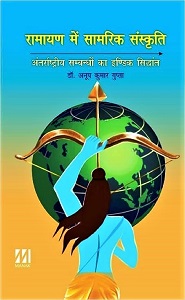
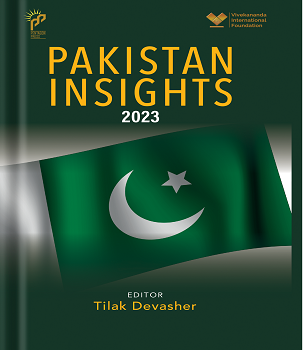

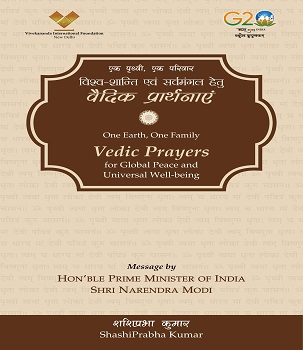
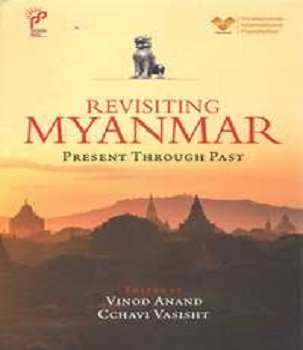
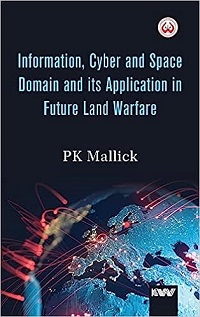
Post new comment